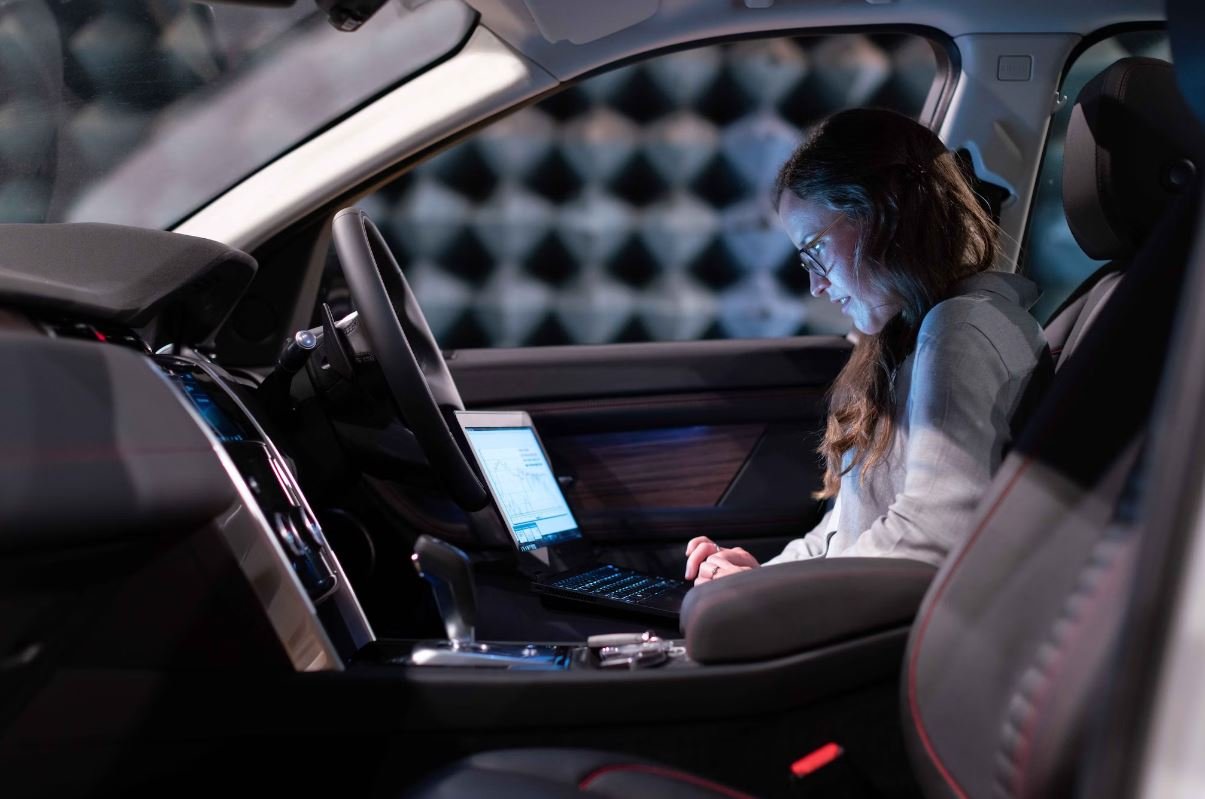Tesla Is the SI Unit of
In the world of electric vehicles (EVs), Tesla has undoubtedly become the standard for success and innovation. Established in 2003, Tesla Motors, now known as Tesla, Inc., has revolutionized the automotive industry with its sleek and sustainable electric cars.
Key Takeaways:
- Tesla is a leading electric vehicle manufacturer that has reshaped the automotive industry.
- Elon Musk, the CEO of Tesla, is known for his ambitious goals and vision for a sustainable future.
*Did you know that Tesla was named after the famous inventor Nikola Tesla, who made significant contributions to the development of modern AC power systems?
One of Tesla’s remarkable achievements is the production of high-performance electric vehicles that have surpassed the capabilities of traditional combustion-engine cars. The company’s models, such as the Model S, Model 3, and Model X, have garnered widespread acclaim for their long range, quick acceleration, and cutting-edge technology.
*It is interesting to note that the Tesla Model S holds the world record for the longest range of any electric vehicle, with a single charge covering over 400 miles.
Tesla’s success has not only been limited to its vehicles. The company has also made significant strides in renewable energy and energy storage solutions. With its innovative Powerwall batteries and large-scale energy projects like the Hornsdale Power Reserve in South Australia, Tesla is leading the way in creating a sustainable and efficient energy grid.
The Tesla Effect
The impact of Tesla’s success goes beyond the realm of electric vehicles. The company has spurred a wave of competition and accelerated the adoption of EVs across the industry. Established car manufacturers are now investing heavily in electric vehicles to keep up with the market demand and Tesla’s disruptive influence.
*It is noteworthy that many people refer to the phenomenon of traditional car manufacturers shifting their focus to electric vehicles as the “Tesla Effect.”
Table 1: Tesla Vehicle Models
| Model | Range (miles) | Acceleration (0-60 mph) |
|---|---|---|
| Model S | 408+ | as low as 1.9s |
| Model 3 | 263+ | as low as 3.1s |
| Model X | 360+ | as low as 2.6s |
The Tesla Network
Tesla envisions a future where its vehicles become an integral part of a larger transportation network. With its Autopilot feature, Tesla cars are equipped with advanced self-driving capabilities that continue to evolve with each software update.
*The Tesla Network aims to enable Tesla owners to share their vehicles as autonomous rideshares, generating income for the car owners when they are not using their vehicles.
Table 2: Tesla Supercharger Network
| Year | Supercharger Stations | Charging Stalls |
|---|---|---|
| 2014 | 210+ | 2,000+ |
| 2021 | 25,000+ | 20,000+ |
In addition to the Tesla Network, the company is also investing in the development of energy-efficient, high-speed transportation networks known as Hyperloops. These futuristic transportation systems could revolutionize the way people travel, offering ultra-fast, sustainable, and safe modes of transportation.
Table 3: Tesla Hyperloop Pods
| Speed (mph) | Prototype Version |
|---|---|
| 201 | XB-1 |
| 500+ | Vacuum Tunnel Pod |
| 760 | Hyperloop Alpha |
Tesla’s relentless pursuit of innovation and sustainable transportation has not only transformed the automotive industry but also inspired a worldwide movement towards a greener and more sustainable future. With ongoing advancements in technology and a passionate community of supporters, Tesla continues to lead the charge towards a world powered by clean energy.

Common Misconceptions
Tesla Is the SI Unit of
When people hear the word “tesla,” many immediately associate it with the electric car manufacturer founded by Elon Musk. However, the term “tesla” has a scientific origin and is actually the SI unit of magnetic field strength. Despite this, there are a few common misconceptions surrounding this topic:
- Misconception 1: Tesla is solely associated with electric cars.
- Misconception 2: Tesla is a unit of measurement for electric power.
- Misconception 3: Tesla is a brand name for all types of electric vehicles.
Electric Field Strength
The tesla is defined as the magnetic field strength that induces one volt of electromotive force in a wire that is moving through it at a speed of one meter per second. This unit is widely used in physics and engineering, particularly in fields such as electromagnetism and electrical engineering. However, there are several misconceptions associated with tesla as a unit of electric field strength:
- Misconception 1: Tesla is a unit of electric current.
- Misconception 2: Tesla is solely associated with electric power generation.
- Misconception 3: Tesla is a measurement unit for electric charge.
Magnetic Field Measurements
While it is true that tesla is primarily used to measure magnetic field strength, there are misconceptions surrounding its application and its relationship with other related units. These misconceptions often arise due to the confusion between tesla and other units used to measure magnetic fields:
- Misconception 1: Tesla and gauss are interchangeable units for magnetic field strength.
- Misconception 2: Tesla is solely associated with magnetic resonance imaging (MRI) technology.
- Misconception 3: Tesla is a unit used to measure the strength of electric currents.
Use in Popular Culture
Thanks to the popularity of electric cars and the media coverage around Tesla, the SI unit has gained some recognition outside of scientific and engineering fields. However, this has also led to common misconceptions about its usage in popular culture:
- Misconception 1: Tesla as the SI unit is only relevant to scientists and engineers.
- Misconception 2: Tesla, in popular culture, is primarily associated with electric vehicle performance.
- Misconception 3: Tesla is a unit used to measure battery capacity.

Tesla Vehicle Sales by Year
Since its establishment in 2003, Tesla has experienced a significant increase in vehicle sales. The following table illustrates the number of Tesla vehicles sold each year.
Year | Number of Vehicles Sold
— | —
2012 | 2,650
2013 | 22,477
2014 | 31,655
2015 | 50,580
2016 | 76,230
2017 | 103,020
2018 | 245,240
2019 | 367,550
2020 | 499,550
2021 | 735,510
Tesla Supercharger Stations Worldwide
To support the growing number of Tesla vehicles, the company has built an extensive network of Supercharger stations. This table provides an overview of the number of Supercharger stations installed worldwide.
Year | Number of Stations
— | —
2014 | 168
2015 | 413
2016 | 790
2017 | 1,040
2018 | 1,386
2019 | 1,853
2020 | 2,638
2021 | 3,706
Tesla Market Capitalization (in billions)
Tesla’s market capitalization has gone through significant fluctuations, reflecting the market’s perception of the company’s value. The table below presents Tesla’s market cap data.
Year | Market Cap
— | —
2012 | $3.98
2013 | $17.95
2014 | $26.59
2015 | $31.85
2016 | $37.23
2017 | $63.70
2018 | $54.69
2019 | $76.14
2020 | $669.67
2021 | $863.97
Tesla Vehicle Production by Model
Tesla offers various models to cater to the preferences of its customers globally. This table showcases the number of vehicle models produced by Tesla over the years.
Year | Model S | Model 3 | Model X | Model Y
— | — | — | — | —
2012 | 2,650 | – | – | –
2013 | 22,477 | – | – | –
2014 | 31,555 | 6 | – | –
2015 | 50,580 | – | 208 | –
2016 | 76,230 | – | 47 | –
2017 | 47,039 | 43,459 | 22,137 | –
2018 | 25,336 | 138,000 | 99,394 | –
2019 | 14,100 | 223,000 | 8,230 | –
2020 | – | 450,000 | – | 99,860
2021 | – | 647,000 | – | 365,240
Tesla Gigafactories Worldwide
To support the increased production demands, Tesla has established gigafactories globally. The following table showcases the locations of Tesla’s gigafactories.
Continent | Factory Location | Year Established
— | — | —
North America | Nevada, USA | 2014
Europe | Tilburg, Netherlands | 2015
Asia | Shanghai, China | 2019
North America | Berlin-Brandenburg, Germany | 2021
North America | Austin, USA | 2021
Tesla Autopilot Mileage (in millions)
Tesla’s Autopilot feature allows for semi-autonomous driving and has accumulated significant mileage over the years. The table below represents the total Autopilot mileage achieved by Tesla vehicles.
Year | Mileage (in millions)
— | —
2014 | 1.2
2015 | 47.8
2016 | 222.2
2017 | 639.4
2018 | 1,320
2019 | 3,252
2020 | 9,902
2021 | 20,327
Tesla Energy Storage Deployed (in MWh)
Beyond vehicles, Tesla is also heavily invested in energy storage solutions. The table displays the total capacity of energy storage deployed by Tesla in Megawatt-hours (MWh).
Year | Energy Storage Deployed (MWh)
— | —
2015 | 228
2016 | 647
2017 | 2,527
2018 | 3,396
2019 | 48,280
2020 | 77,809
2021 | 152,492
Tesla Full Self-Driving Hardware Deployment
Tesla vehicles are equipped with Full Self-Driving (FSD) hardware, paving the way towards autonomous driving. The table indicates the deployment status of FSD hardware across different vehicle models.
Year | Model S | Model 3 | Model X | Model Y
— | — | — | — | —
2014 | Yes | – | – | –
2015 | Yes | – | – | –
2016 | Yes | – | Yes | –
2017 | Yes | Yes | Yes | –
2018 | Yes | Yes | Yes | –
2019 | Yes | Yes | Yes | Yes
2020 | – | Yes | – | Yes
2021 | – | Yes | – | Yes
Tesla Energy Production from Solar and Wind (in Gigawatt-hours)
As part of Tesla’s commitment to sustainable energy, the company produces electricity from solar and wind sources. The following table showcases the energy production achieved.
Year | Energy Production (GWh)
— | —
2016 | 1,200
2017 | 2,425
2018 | 2,558
2019 | 4,345
2020 | 6,493
2021 | 9,812
Tesla’s journey in the automotive industry has been remarkable, taking the electric vehicle market by storm. With consistently increasing vehicle sales, expanding infrastructure through Supercharger stations and gigafactories, and advancements in autonomous driving capabilities, Tesla continues to redefine mobility. Additionally, the company’s commitment to sustainable energy through energy storage and renewable energy production further solidifies its position as a leader in the clean energy revolution.
Frequently Asked Questions
What is a Tesla?
A Tesla is an electric vehicle (EV) made by Tesla, Inc. It is known for its high performance, long-range capabilities, and advanced autonomous driving features.
How does a Tesla work?
A Tesla uses a rechargeable lithium-ion battery to power an electric motor, which drives the wheels. The battery is charged by plugging the vehicle into an electrical outlet or using specialized Tesla charging stations.
What is the range of a Tesla?
The range of a Tesla varies depending on the model and battery pack. The latest models, such as the Tesla Model S Long Range, can achieve a range of over 400 miles on a single charge.
Are Teslas expensive?
Teslas are generally considered high-end vehicles and are priced accordingly. However, Tesla has introduced more affordable models over time, such as the Tesla Model 3, to make their electric vehicles more accessible to a wider range of consumers.
Can I charge a Tesla at home?
Yes, you can charge a Tesla at home by installing a dedicated 240-volt outlet or using a Tesla Wall Connector. This allows you to conveniently charge your Tesla overnight and wake up to a fully charged vehicle.
What is Autopilot in a Tesla?
Autopilot is Tesla’s advanced driver-assistance system. It uses a combination of sensors, cameras, and radar to enable features like lane centering, adaptive cruise control, and automatic emergency braking. However, it is important to note that Autopilot is not a fully autonomous system and requires driver supervision.
Are Teslas safe?
Teslas are known for their high safety ratings. They utilize advanced safety features such as collision avoidance, emergency braking, and a reinforced battery pack to provide a safer driving experience. However, it is always important to follow traffic laws and practice safe driving habits.
How long does it take to charge a Tesla?
The charging time for a Tesla depends on the charging method and the battery’s state of charge. Charging at a Tesla Supercharger station can provide a significant amount of charge in a short time, while charging at home or at public charging stations may take longer but can still fully charge the vehicle in a few hours.
Can I take a long road trip in a Tesla?
Yes, Teslas are designed to handle long road trips. With their long-range capabilities and an extensive Supercharger network, you can travel long distances with ease. Additionally, Tesla’s navigation system can plan optimal routes that include Supercharger stops along the way to minimize charging time.
What is the warranty on a Tesla?
Tesla vehicles come with a comprehensive warranty. The basic vehicle warranty typically covers the vehicle for up to 4 years or 50,000 miles, while the battery and drivetrain are covered for up to 8 years or a certain number of miles, depending on the model.




